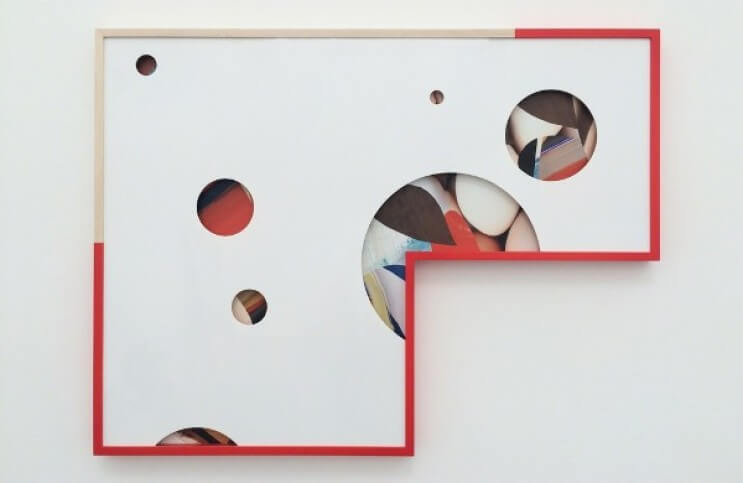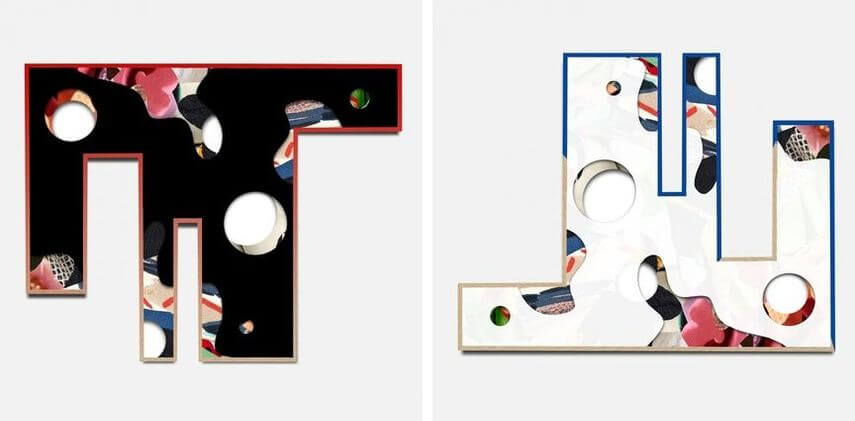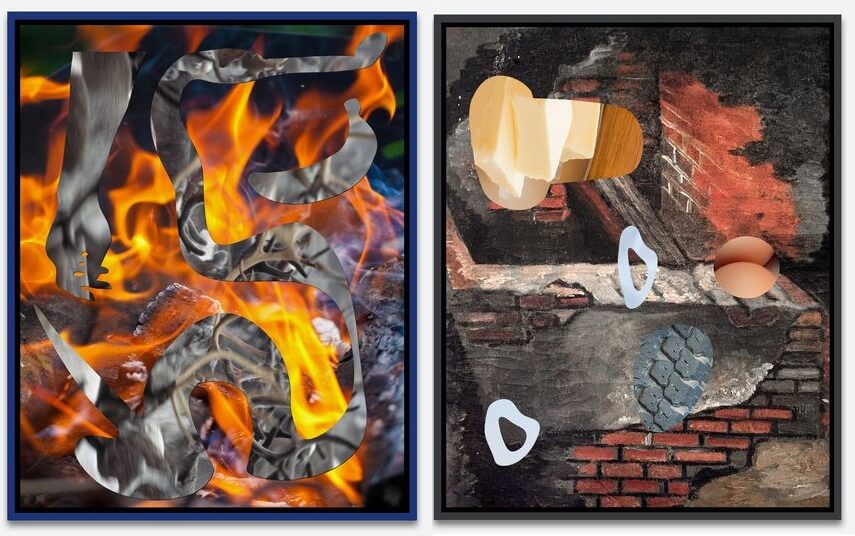
Redefining Photography - The Mediums of Kate Steciw
If we were conducting an investigation into the term Post Internet Art, Kate Steciw might appear at first to be an excellent Artist of Interest. Steciw makes abstract, three-dimensional objects using pre-existing digital imagery procured from the Internet as her primary medium. From online databases, she selects stock photographs then divides them into fragments in Photoshop and creates collages from the fragments. She then uses the collaged images as surfaces for physical objects she constructs. Various prognosticators still debate about the precise, long-form definition of Post Internet Art, but most agree it has something to do with the idea that, although certain contemporary artists still routinely use the Internet and its tools as artistic mediums, we are past the point when the Internet itself is novel enough to be the subject of artwork. The Internet and its tools have simply become mediums with which to address other subjects, same as paint, wood, or mud. And yes, Kate Steciw seems to demonstrate this phenomenon through her work, as she indeed incorporates the Internet and other digital technologies into her practice of making real world aesthetic objects. But if she chose, she could easily go analog. She could search through stacks of stock photos by hand then cut and paste her selected images with scissors and glue. Artists (Braque, Picasso, Picabia, Rauschenberg, Baldessari, et al.) have been doing that kind of thing for more than a century. So to describe Steciw as a Post Internet Artist, and her work as Post Internet, somehow seems like a diminishment of both her and it. The reason we still talk about those other artists listed above is because with their work the medium is not the only message. And the same can be argued about Kate Steciw. Rather than focusing on where she gets her materials and how, we should look instead at the more substantial elements of her work, such as what universalities it communicates that transcend the now.
Fragmentation as Gesture
Ample justifications exist to label Kate Steciw a photographic artist. She earned an MFA in photography from the School of the Art Institute of Chicago. She worked for a decade as a photo retoucher for a commercial firm. She uses photographs as her source materials, and the prints she eventually makes from her collaged images are like photographic prints. But there are also plenty of ways in which her work has nothing to do with photography. One obvious way is the physical form her final objects assume.
After finishing her finished Photoshop collages and printing them, Kate Steciw slices into her prints, sometimes at random. This physical gesture of fragmentation results in odd geometric shapes, punctured surfaces and broken forms. It is as likely to result in an object that when framed sits on the floor or hangs from the ceiling as one that hangs on the wall. Like gestural abstract paintings on which the action of the hand of the artist can be read in marks on the surface, these objects exhibit the mark of the hand of the artist in the shape of the surface itself.
 Kate Steciw – Composition 520J, 2015 (Left) and Composition 520K, 2015 (Right), © Brand New Gallery
Kate Steciw – Composition 520J, 2015 (Left) and Composition 520K, 2015 (Right), © Brand New Gallery
Sculptural Intervention
Many works Steciw has made contain seemingly extraneous physical elements that look like they have been added after the fact, like the work was complete then some other outside detritus was attached to it or set on top of it. This might come in the form of a chain dangling from the work, or part of a sliced-up bumper sticker adhered to the surface; wheels attached to the bottom of a floor piece, or a section of framing attached to the surface.
It could be tempting as a viewer to read these additional elements as decoration, like bedazzled jewels added to strategically ripped blue jeans. But they are more than that. Steciw calls them sculptural interventions. An added piece of framing creates new geometric dimensions. Wheels create the potential for kinetics. Stickers add texture, transforming a flat surface into a three-dimensional one. A chain connects elements, raising questions whether the connected elements support each other, whether they share common meaning, and whether they are in fact two elements or one.
 Kate Steciw - Actife Plassity, Installation view at Neumeister BarAm, Berlin, photo courtesy Neumeister BarAm
Kate Steciw - Actife Plassity, Installation view at Neumeister BarAm, Berlin, photo courtesy Neumeister BarAm
Image as Non-Image, Non-Meaning as Meaning
Another idea Kate Steciw has often mentioned regarding her own work is randomness. For example, she has suggested it may not matter what extra things she attaches to her pieces. Any attached element would have the same result: it would be a sculptural intervention. And that it does not matter what source photographs she chooses: regardless, they will become non-images—aesthetic fill for abstract space. And that whatever composition or object she ultimately ends up with is only one of an infinite number that could have been, any of which might be just as valid. It is as though Steciw is saying her process allows her to function only as editor, and that any editing decision she makes is as good as any other.
In this way, Steciw is indeed making a timeless, universal statement, much like that made by traditional photographers. Taking a picture with a camera is an editing process. The world is there to see. The photographer selects one composition, randomly or by methodical choice: either way some image results, one among infinite possibilities, the relative merits of which are debatable. Similarly, Steciw takes pictures; literally takes them from other photographers. She edits the existing visual world, crops it, reframes it, presents it back to us, sometimes randomly. She uses images to create abstractions. Using elements that contained previous meaning she creates objects that now await whatever meaning viewers choose to assign them. Regardless of her medium or her labels, Steciw is reordering reality to help investigate the unfathomable, and express the unspeakable: and such is the work of all photographers, and all artists, of every time.
 Kate Steciw – Untitled artworks, 2016, © Brand New Gallery
Kate Steciw – Untitled artworks, 2016, © Brand New Gallery
Featured image: Kate Steciw - Composition 028aaa, 2015, UV print on dibond, plexi, © Kate Steciw and Anat Ebgi, Los Angeles
All images used for illustrative purposes only
By Phillip Barcio






